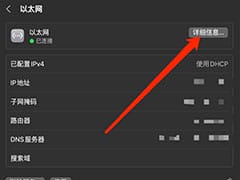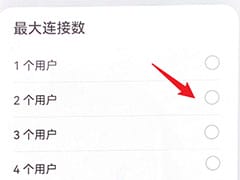搞懂Windows 2000 DNS服务器区域类型区别,详解正向与反向搜索区域
2023-09-27 15:01:54
Windows 2000 DNS 服务器中的正向搜索区域与反向搜索区域
正向搜索区域:将域名解析为 IP 地址
Imagine you're lost in a bustling metropolis, desperately seeking your destination. Enter a street address into your trusty GPS, and it magically navigates you to your desired location. This is akin to how a DNS server operates, with one crucial difference: instead of street addresses, it translates domain names like "www.example.com" into their corresponding IP addresses, allowing computers to seamlessly connect with each other.
The forward lookup zone is the unsung hero behind this translation process. It's like a comprehensive directory that maps domain names to their respective IP addresses, ensuring that when you type in a website address, you're swiftly whisked to the intended destination without any detours. Forward lookup zones are the backbone of the internet and internal networks, empowering computers to communicate using user-friendly domain names rather than cumbersome IP addresses. They also serve as a vigilant guardian against cyber threats like denial-of-service attacks and domain hijacking.
反向搜索区域:将 IP 地址解析为主机名
Now, let's switch gears and imagine you're facing a different dilemma. You've stumbled upon a mysterious IP address, like 192.168.1.100, and you're burning with curiosity to uncover its identity. This is where the reverse lookup zone steps into the spotlight. Think of it as a detective, meticulously unraveling the enigma of IP addresses and revealing their hidden identities—the hostnames they represent.
Reverse lookup zones are primarily employed for email delivery and troubleshooting network woes. When you access a device or service via its IP address, the reverse lookup zone swoops into action, translating the IP address into a hostname, making it easier to identify the culprit. It's also a valuable tool for tracking down unusual network traffic or suspicious activity.
Resource Record Types: The Building Blocks of DNS Zones
The world of DNS zones is teeming with different resource record types, each playing a specific role in the DNS ecosystem. Let's delve into the most common types:
- Forward lookup zone resource records:
- A record: The trusty sidekick that translates hostnames into IPv4 addresses.
- AAAA record: Its IPv6 counterpart, bridging the gap between hostnames and IPv6 addresses.
- CNAME record: A clever alias, redirecting one hostname to another.
- MX record: The mailman's guide, directing domains to their designated mail servers.
- TXT record: A text vault, storing vital information like SPF records and DKIM records.
- Reverse lookup zone resource records:
- PTR record: The detective's magnifying glass, uncovering the hostname behind an IP address.
Creating and Managing DNS Zones: A Step-by-Step Guide
Creating and managing DNS zones in Windows 2000 is a breeze. Here's a step-by-step guide to help you navigate the process:
- Creating a zone: Kickstart the process by opening the DNS Management console, right-clicking on the "Zones" folder, and selecting "New Zone." Follow the wizard's prompts, choosing the zone type (forward or reverse), zone name, zone file location, and more.
- Adding and modifying resource records: Once your zone is up and running, you can start populating it with resource records. Right-click on the zone you want to modify, select "New Resource Record," and let the wizard guide you through the creation process.
- Zone transfers: Ensure seamless replication of zone data between DNS servers. Use the "Zone Transfers" wizard in the DNS Management console to set up zone transfers.
Conclusion: The Dynamic Duo of DNS
Forward and reverse lookup zones are the dynamic duo of Windows 2000 DNS servers, working in harmony to facilitate seamless communication and troubleshooting in the digital realm. By mastering the concepts, roles, resource records, and management techniques of these zones, you can elevate your network's performance, bolster its security, and simplify troubleshooting endeavors.
Frequently Asked Questions
-
What's the difference between a forward lookup zone and a reverse lookup zone?
- A forward lookup zone translates domain names into IP addresses, while a reverse lookup zone translates IP addresses into domain names.
-
Why are DNS zones important?
- DNS zones are crucial for resolving domain names into IP addresses, ensuring that computers can communicate effectively across networks.
-
What are the most common resource record types?
- A record, AAAA record, CNAME record, MX record, TXT record, and PTR record are some of the most frequently used resource record types.
-
How do I create a DNS zone in Windows 2000?
- Open the DNS Management console, right-click on the "Zones" folder, select "New Zone," and follow the wizard's prompts.
-
What is a zone transfer?
- A zone transfer is the process of replicating zone data from one DNS server to another, ensuring that all DNS servers have the most up-to-date information.




